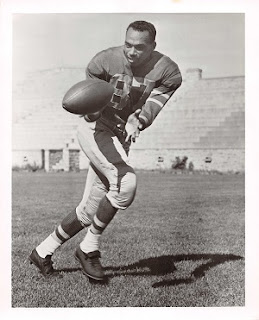Green Bay’s First African American Football Player

Bob (Robert) Mann became the first African American player to play in a regular season game for the Green Bay Packers in 1950. Mid-season in 1950, a line coach for the Packers called Mann and asked him to play. He said no. They called again. This time they were successful in recruiting the receiver to Green Bay. Mann arrived on Saturday and played on Sunday. But before that, Mann was one of the first African American players signed to the Detroit Lions. He played with them for two seasons. In 1949, during Bob Mann’s second season with the Detroit Lions, the team played the Philadelphia Eagles in New Orleans. Southern tradition banned African American players from playing at the stadium. Mann and his teammates Mel Groomes and Wallace Triplett were not allowed to play. After discussion with the league, the Lions’ head coach Bo McMillin was given the option to break the color barrier. He refused. Instead of playing alongside their teammates, Mann, Groomes, and Triplett listened to the...



